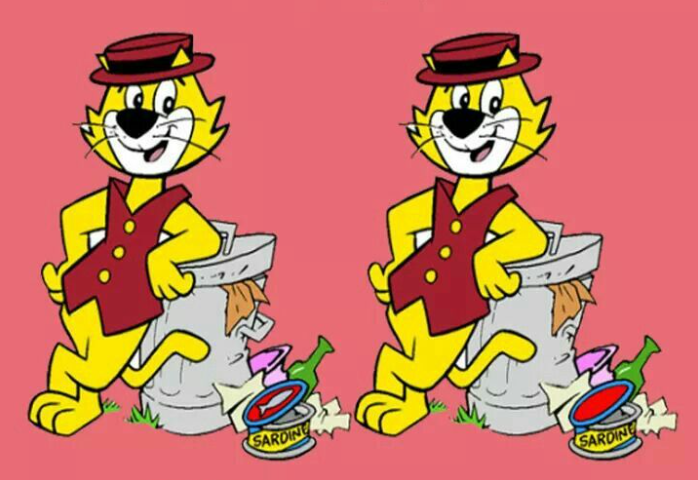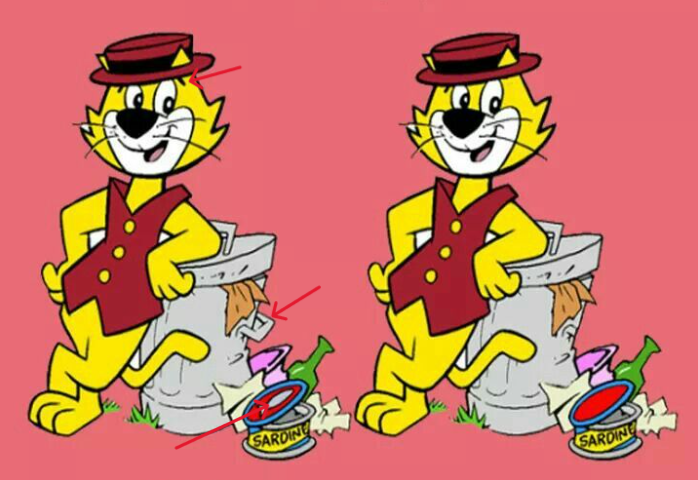The Fascinating World of Optical Illusions and Spot-the-Difference Puzzles
Optical illusions and Spot-the-Difference puzzles both captivate our attention and challenge our perception of reality. While illusions play with how our brains interpret visual information, Spot-the-Difference games sharpen our ability to notice small details. Both activities engage and entertain, offering insights into the intricacies of how we see and process the world.

What Are Optical Illusions?
Optical illusions are visual tricks that distort how we perceive an object or scene. They can make us see things that don’t exist or misinterpret what’s in front of us. These illusions often exploit how our brains process depth, color, size, motion, and patterns.
For example, a line might appear longer or shorter depending on the surrounding shapes, or colors might seem different due to contrasting backgrounds. These phenomena occur because our brains strive to make sense of complex visual information, sometimes leading to false perceptions.
Types of Optical Illusions
1. Literal Illusions
Literal illusions show something entirely different from the actual image, such as a drawing that looks like two faces but also resembles a vase.
2. Physiological Illusions
These arise from overstimulation of the eyes or brain. Staring at a bright light, for example, might create afterimages that linger even when you look away.
3. Cognitive Illusions
Cognitive illusions trick our brains by playing on assumptions and expectations. The famous “checker shadow illusion” demonstrates how context affects our perception of color and shade.

The Connection Between Optical Illusions and Spot-the-Difference Puzzles
Both optical illusions and Spot-the-Difference games rely on our visual perception but in slightly different ways. Optical illusions often reveal how our brains can be deceived, while Spot-the-Difference puzzles challenge us to notice subtle changes or discrepancies.
Spot-the-Difference puzzles engage the same visual and cognitive processes that optical illusions exploit. By comparing two images, we train our brains to process visual data more accurately, boosting our observational skills.
Mastering the Art of Spot-the-Difference
Spot-the-Difference puzzles are not just a fun pastime—they’re a powerful tool for developing attention to detail. Want to achieve elite status in spotting differences? Here’s how:
1. Practice Makes Perfect
The more you play, the better you’ll become. Regularly solving these puzzles helps your brain recognize patterns and discrepancies faster.
2. Pay Attention to Details
The key to success is focusing on the smallest elements, like shading, patterns, or objects in the background. Differences are often subtle but can become easier to spot with practice.
3. Use a Step-by-Step Method
Adopt a systematic approach. Start in one corner of the image and scan methodically to ensure you don’t miss anything.
4. Relax Your Vision
Sometimes, staring too hard can make it harder to spot differences. Take a deep breath, blink a few times, and let your eyes adjust. A relaxed gaze often uncovers what a focused stare might miss.
5. Use Tools
Physically pointing out differences with a pen or your finger helps you stay organized. This simple technique ensures you don’t overlook previously identified variations.

The Benefits of Spot-the-Difference Games
Beyond entertainment, Spot-the-Difference puzzles offer significant mental and emotional benefits:
1. Enhances Observation Skills:
These games fine-tune your ability to notice details, a skill that’s valuable in everyday life.
2. Reduces Stress:
Focusing on a game can provide a mental break from daily worries, offering a moment of calm and mindfulness.
3. Boosts Brain Power:
By engaging your visual and cognitive faculties, Spot-the-Difference puzzles help improve memory and problem-solving skills.
Becoming Part of the 5% Elite
Joining the top 5% of players in Spot-the-Difference games requires dedication and practice. Here’s why patience and persistence are essential:
- Gradual Improvement: Each puzzle you complete strengthens your skills. Over time, you’ll notice differences faster and more accurately.
- Enhanced Focus: Consistent practice builds the ability to concentrate deeply, benefiting other areas of life as well.
- Confidence Boost: As you improve, you’ll gain a sense of accomplishment, motivating you to tackle more challenging puzzles.

Conclusion
Optical illusions and Spot-the-Difference puzzles are not only fascinating but also enriching. They reveal the quirks of our perception and offer a playful way to train our minds. By practicing regularly and employing proven strategies, you can sharpen your observational skills and maybe even join the exclusive ranks of the 5% elite.
So why not dive into a puzzle today? Whether it’s an intricate illusion or a Spot-the-Difference challenge, you’ll be amazed at how these activities transform how you see the world!





